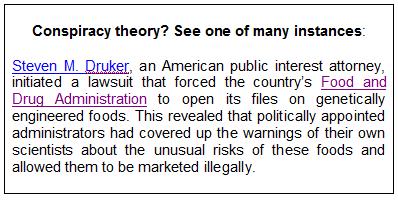Blog Archives
If ever there was a case for the precautionary principle . . . and America is beginning to admit it
 Today George Monbiot in the Guardian presents links to a large body of evidence suggesting that Alzheimer’s is primarily a metabolic disease. Some scientists now call it diabetes type 3.
Today George Monbiot in the Guardian presents links to a large body of evidence suggesting that Alzheimer’s is primarily a metabolic disease. Some scientists now call it diabetes type 3.
One such, in Eat Your Way to Dementia New Scientist, 1.9.12, is award-winning journalist Bijal Trivedi (left) – informed by a degree in biochemistry, an MS in molecular, cell, and developmental biology and an MA in science journalism from NYU.
Before noting the technologies which companies use to make ‘junk food’ addictive, Monbiot notes that there is a long-established association between Alzheimer’s and diabetes 2 and there are also associations between Alzheimer’s and obesity:
“Researchers first proposed that Alzheimer’s was another form of diabetes in 2005. The authors of the original paper investigated the brains of 54 corpses, 28 of which belonged to people who had died of the disease. They found that the levels of both insulin and insulin-like growth factors in the brains of Alzheimer’s patients were sharply reduced by comparison to those in the brains of people who had died of other causes. Levels were lowest in the parts of the brain most affected by the disease. Their work led them to conclude that insulin and insulin-like growth factor are produced not only in the pancreas but also in the brain. Insulin in the brain has a host of functions: as well as glucose metabolism, it helps to regulate the transmission of signals from one nerve cell to another, and affects their growth, plasticity and survival.”
He concludes that the government’s answer to the multiple disasters caused by the consumption of too much sugar and fat will merely be to call on both companies and consumers to regulate themselves . . .
A search revealed a wealth of awareness amongst commentators in the USA
![]()
Two examples are the findings of an Iowa State University survey and of Marion Nestle, editor of the 1988 Surgeon General’s Report on Nutrition and Health.
The Iowa State University survey received 1710 responses from government scientists and inspectors and found that parts of the food industry withhold food safety data in order to protect their business interests.
 Editor of the 1988 Surgeon General’s Report on Nutrition and Health, Marion Nestle, has illustrated food politics in action: “watered-down government dietary advice, schools pushing soft drinks, diet supplements promoted as if they were First Amendment rights”.
Editor of the 1988 Surgeon General’s Report on Nutrition and Health, Marion Nestle, has illustrated food politics in action: “watered-down government dietary advice, schools pushing soft drinks, diet supplements promoted as if they were First Amendment rights”.
Regular readers will not be surprised by her explanation of how food companies lobby officials and co-opt experts and her conclusion:



